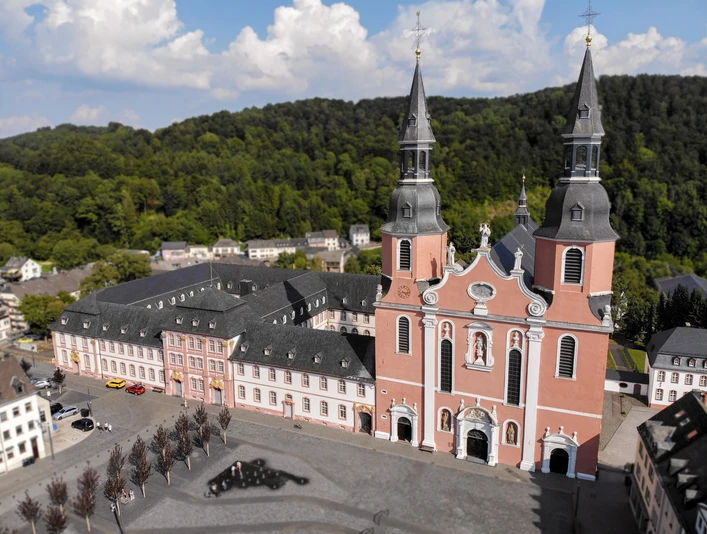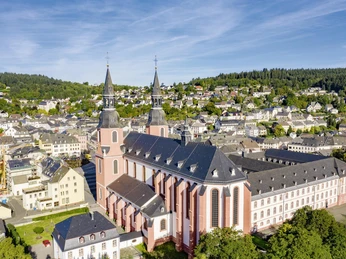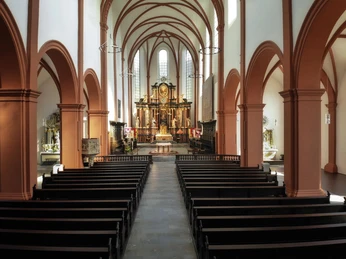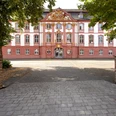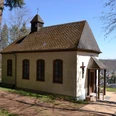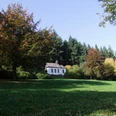Charlemagne had the first church of St. Salvator built. As the depository of the relic "Sandals of Christ," the abbey church of the Benedictine Abbey of Prüm was so richly adorned that it was called the "Golden Church."
After a tumultuous history during which the church was destroyed multiple times and fell victim to fire disasters, the Elector of Trier, Franz Ludwig of Pfalz-Neuburg, commissioned the reconstruction of the church of St. Salvator in 1721. The ground plan of the current church traces back to the designs of court architect Hans Georg Judas, who drew on earlier styles such as Romanticism, Gothic, and Renaissance. In contrast, the interior design reflects the main Franconian Baroque spirit of his successors Neumann and Seitz.
After the abbey of Prüm was dissolved during secularization, the abbey church came under the ownership of the Catholic parish of Prüm in 1802. During World War II, the church of St. Salvator was heavily damaged, although the substance of the building remained intact.
By May 1950, the damage had been sufficiently repaired for services to be celebrated again in the church of St. Salvator. On June 10, 1950, the church of St. Salvator was elevated to the status of "Basilica Minor" by Pope Pius XII.
Inside the St. Salvator Basilica today, visitors can admire the Baroque high altar, the reliquary, and the imperial tomb of Emperor Lothar, grandson of Charlemagne. The reliquary is only displayed on very special church feast days.
The St. Salvator Basilica can also be visited as part of a guided tour.
Nearby
